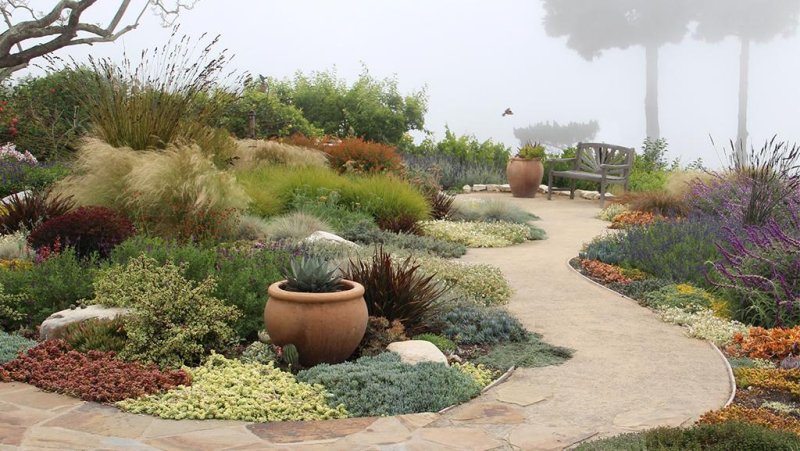
As the world becomes more environmentally conscious, the concept of xeriscaping has gained popularity in recent years. Xeriscaping is a sustainable approach to landscaping that minimizes water usage, reduces maintenance, and promotes the use of native and drought-resistant plants. This article will explore the benefits of xeriscaping, its principles, and how to incorporate it into your landscape design.
What is Xeriscaping?
Xeriscaping, a term derived from the Greek word "xeros," meaning dry, is a landscaping method that focuses on water conservation and sustainable practices. The primary goal of xeriscaping is to create a beautiful, functional outdoor space that requires minimal water and maintenance while still providing a habitat for local wildlife.
Benefits of Xeriscaping
- Water conservation: Xeriscaping significantly reduces water consumption, making it an environmentally friendly choice for homeowners and businesses alike. By using drought-resistant plants and efficient irrigation systems, xeriscaped landscapes can save thousands of gallons of water per year.
- Lower maintenance: Since xeriscaping focuses on using native and drought-resistant plants, these landscapes typically require less maintenance than traditional landscapes. This means less time spent on tasks like mowing, pruning, and fertilizing, which can save you time and money.
- Reduced water bills: By conserving water, xeriscaped landscapes can lead to lower water bills. This is especially beneficial for those living in drought-prone areas or those who want to reduce their overall environmental impact.
- Enhanced curb appeal: Xeriscaping can create a visually appealing landscape that showcases the beauty of native plants and natural materials. This can increase your property's value and make it more attractive to potential buyers.
- Wildlife habitat: By incorporating native plants into your xeriscaped landscape, you can create a habitat for local wildlife, including birds, butterflies, and other pollinators. This not only benefits the environment but also adds to the overall aesthetic of your outdoor space.
Principles of Xeriscaping
To create a successful xeriscaped landscape, it's essential to follow these seven principles:
- Planning and design: Begin by assessing your site's conditions, including sun exposure, soil type, and existing vegetation. This information will help you select the most appropriate plants and layout for your landscape.
- Soil improvement: Amend your soil with organic matter to improve its water-holding capacity and drainage. This will help support the growth of your drought-resistant plants.
- Efficient irrigation: Implement an efficient irrigation system that delivers water directly to the roots of your plants. This can include drip irrigation, soaker hoses, or other low-flow systems.
- Appropriate plant selection: Choose native and drought-resistant plants that are well-suited to your region's climate and soil conditions. These plants will require less water and maintenance than non-native species.
- Mulching: Apply a layer of organic mulch, such as wood chips or bark, around your plants. This will help retain moisture in the soil, suppress weeds, and regulate soil temperature.
- Practical turf areas: Limit the size of your lawn or turf areas, as these typically require the most water and maintenance. Instead, focus on using drought-resistant groundcovers or other low-maintenance alternatives.
- Maintenance: Regularly maintain your xeriscaped landscape by weeding, pruning, and monitoring for pests and diseases. This will ensure that your plants remain healthy and vibrant.
Incorporating Xeriscaping into Your Landscape Design
To create a xeriscaped landscape, follow these steps:
- Assess your site: Determine your property's sun exposure, soil type, and existing vegetation. This information will help you select the most appropriate plants and layout for your landscape.
- Develop a plan: Sketch out a rough design for your landscape, taking into account the principles of xeriscaping. Consider incorporating features such as rock gardens, water-wise plantings, and native grasses.
- Amend your soil: Improve your soil's water-holding capacity and drainage by adding organic matter, such as compost or aged manure.
- Select your plants: Choose native and drought-resistant plants that are well-suited to your region's climate and soil conditions. Consider incorporating a mix of groundcovers, perennials, shrubs, and trees to create a diverse and visually appealing landscape.
- Install your irrigation system: Implement an efficient irrigation system that delivers water directly to the roots of your plants. This can include drip irrigation, soaker hoses, or other low-flow systems.
- Apply mulch: Cover the soil around your plants with a layer of organic mulch, such as wood chips or bark. This will help retain moisture in the soil, suppress weeds, and regulate soil temperature.
- Maintain your landscape: Regularly maintain your xeriscaped landscape by weeding, pruning, and monitoring for pests and diseases. This will ensure that your plants remain healthy and vibrant.
Conclusion
Xeriscaping is a sustainable approach to landscaping that offers numerous benefits, including water conservation, lower maintenance, reduced water bills, enhanced curb appeal, and a habitat for local wildlife. By following the principles of xeriscaping and incorporating native and drought-resistant plants into your landscape design, you can create a beautiful, functional outdoor space that promotes environmental stewardship and sustainable living.







0 Comments
Post Comment
You will need to Login or Register to comment on this post!